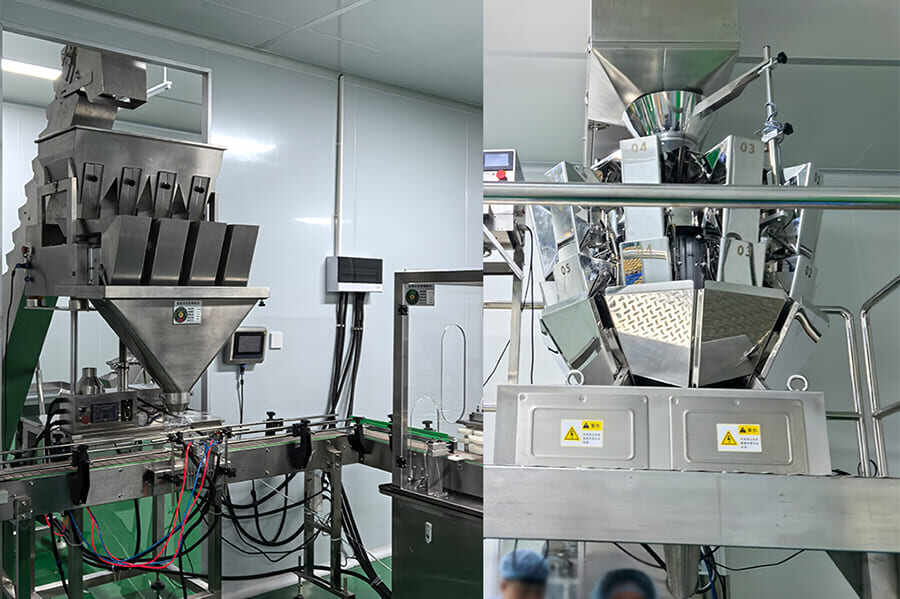The chickpea paste production line utilizes dried chickpeas as the primary raw material, transforming them into smooth, flavorful chickpea paste through a combination of automated and semi-automated processing equipment. Engineered for efficiency, energy conservation, and environmental sustainability, this line is ideally suited for large-scale industrial manufacturing, ensuring consistent output and premium product quality.
Dried chickpeas are fed into a cleaning tank via a conveyor belt, where high-pressure water jets and vibrating screens eliminate impurities and surface debris. After washing, the chickpeas are transferred to small plastic trays on the conveyor system, allowing excess moisture to drain as they move to the next stage.
Cleaned chickpeas are submerged in water within a soaking machine for 14 hours, enabling them to absorb moisture, double in size, and soften—critical for subsequent processing.
Pre-soaked chickpeas are conveyed through a pipeline into a preheated steamer, where they are steam-cooked at 125°C for 40 minutes until tender and fully cooked, ensuring optimal texture for grinding.
Cooked chickpeas are fed into a grinder, where water, sunflower oil, olive oil, salt, garlic powder, and other seasonings are added simultaneously. The machine grinds the mixture into a fine, uniform paste, ready for further processing.
The ground chickpea paste is pumped into a mixing barrel along with tahini. Rotating paddles ensure thorough blending, integrating the ingredients to achieve a smooth, consistent texture.
The mixed paste is transferred to a sterilization unit, where it undergoes heat treatment to eliminate contaminants, guaranteeing product hygiene and safety in compliance with food industry standards.
Sterilized chickpea paste is precision-filled into plastic containers via a automated filling machine, which dispenses equal portions into each package. Following filling, a layer of plastic film is heat-sealed over the container, after which a robotic arm affixes a plastic lid and applies labels, completing the packaging process.
Comprising conveyor belts, vibrating screens, and cleaning tanks, this equipment removes dirt, stones, and other foreign materials from raw chickpeas, ensuring only clean ingredients proceed to the next stage.
Typically constructed as metal troughs or specialized soaking tanks, these units provide controlled water immersion to hydrate and soften chickpeas, optimizing them for steaming.
Steamers or industrial cooking vessels are used to heat chickpeas at precise temperatures (125°C) and durations (40 minutes), ensuring uniform cooking and texture consistency.
Grinders or industrial mixers with sharp, precision blades grind cooked chickpeas into a smooth paste, incorporating seasonings seamlessly during the process.
Mixing barrels or paddle mixers facilitate thorough blending of chickpea paste with tahini and other additives, ensuring homogeneity and flavor uniformity.
Sterilization barrels or commercial-grade sterilizers use heat to eliminate microbial contaminants, safeguarding product integrity and extending shelf life.
Integrated filling machines, nozzles, film sealers, and robotic arms work in tandem to dose, seal, and label packages efficiently, ensuring accuracy and consistency in weight and presentation.
This streamlined production line combines advanced equipment and precise process control to deliver high-quality chickpea paste at scale, balancing productivity with food safety and product excellence.


 Hot News
Hot News
